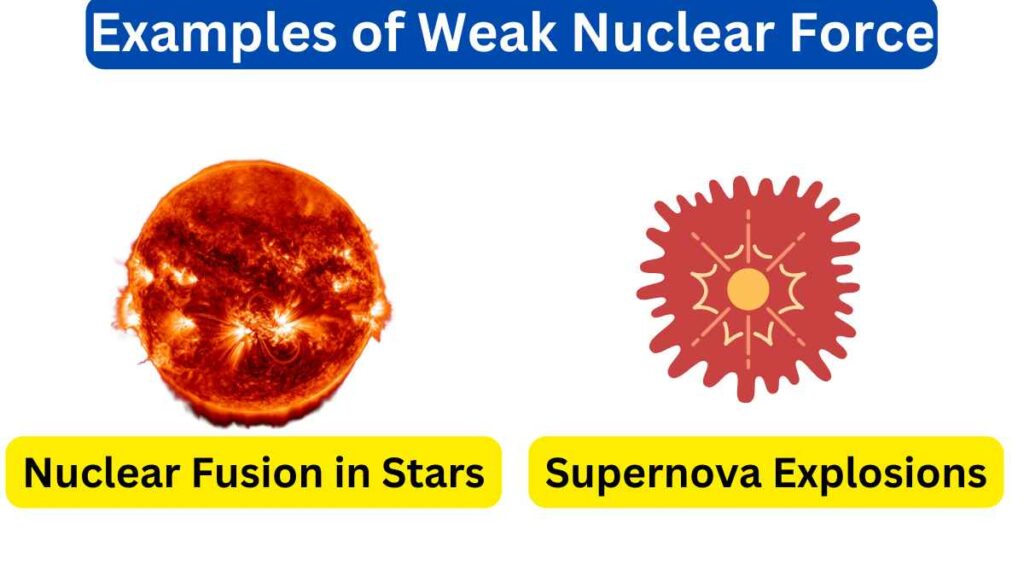10 Examples of Weak Nuclear Force
The weak nuclear force is a fundamental force of nature that is responsible for certain types of radioactive decay. Examples of weak nuclear force include beta decay in radioactive materials and nuclear fusion in stars.
Examples of Weak Nuclear Force
Here are ten examples of the weak nuclear force in action.

1. Beta Decay
One of the most well-known examples of the weak nuclear force is beta decay. In this process, a neutron within an atomic nucleus is transformed into a proton, an electron (beta-minus decay), or a positron (beta-plus decay), and a neutrino or antineutrino is emitted. Beta decay is responsible for the conversion of neutrons to protons and vice versa.
2. Nuclear Fusion in Stars
The weak force plays a role in nuclear fusion processes within stars. For example, in the proton-proton chain reaction that powers the Sun, weak interactions facilitate the conversion of protons into neutrons, enabling the fusion of hydrogen nuclei into helium.
3. Neutrino Interactions
Neutrinos, which are electrically neutral particles, interact primarily through the weak nuclear force. Neutrino detectors, such as those used in astrophysics and particle physics experiments, rely on weak interactions to detect these elusive particles.
4. Supernova Explosions
In supernova explosions, the gravitational collapse of a massive star triggers a violent release of energy. Weak interactions are involved in processes like electron capture and the production of heavy elements during these cataclysmic events.
5. Neutron Activation
In nuclear physics and medicine, neutrons are used to induce nuclear reactions in materials. Weak interactions play a role in neutron activation, where a nucleus captures a neutron and transforms into a different isotope or element.
6. Nuclear Beta Decay Spectroscopy
The study of beta decay spectra, which describe the energies and angles of emitted particles during beta decay, provides essential information about weak interactions and the properties of neutrinos.
7. Parity Violation
Weak interactions violate the conservation of parity, a fundamental symmetry principle in physics. Experiments demonstrating parity violation in weak interactions have confirmed the unique nature of the weak nuclear force.
8. Solar Neutrino Problem
The detection of solar neutrinos on Earth was initially inconsistent with theoretical predictions, leading to the “solar neutrino problem.” The solution to this puzzle involved understanding how neutrinos change (oscillate) between different types via weak interactions as they travel through space.
9. Weak Force in Particle Physics
In particle physics experiments, the weak force is responsible for various interactions between particles. It is one of the fundamental forces explored in particle accelerators like the Large Hadron Collider (LHC).
10. Nuclear Beta Decay in Radiocarbon Dating
Radiocarbon dating relies on the decay of carbon-14 (C-14) through weak interactions. By measuring the remaining C-14 in ancient organic materials, scientists can determine their age, providing insights into archaeological and geological timelines.

 written by
written by 





Leave a Reply